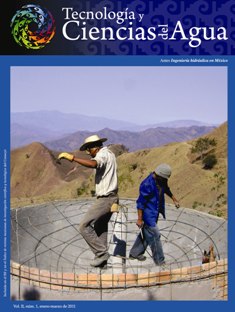Hyperbolic mixture length, velocity profile, and flow resistance law
Keywords:
theoretical value of the von Kármán constant, wall roughness effectsAbstract
Considering that in water flow total shear stress is the sum of a viscous shear stress and a turbulent shear stress, a hyperbolic mixture length is introduced in the Newton hypothesis to describe the relationship between total shear stress and the mean velocity profile derivative. The hyperbolic length is reduced to the Prandtl length which is proportional to the wall distance when the latter is large. The existence of an inflexion point in the velocity profile induces a theoretical value of the von Kármán constant very close to its experimental value. From this, profile formulas for average fluid velocities in a pipe and rectangular channel are deduced, and from these latter, resistance to flow laws are established. The pipe resistance law, expressed in a Darcy-Weisbach form, indicates that the friction factor shows the extreme behaviors of Poiseuille and Prandtl laws. The wall roughness for high Reynolds numbers is introduced following the Colebrook and White idea, adding to the turbulence scale another one proportional to the Nikuradse sand grains size; the friction factor has the same behavior as that of the Moody diagram. The last scale will depend on the Reynolds number in transient regime in agreement with the experimental results of Nikuradse and its dependency with respect to small and moderate Reynolds number values, and the wall roughness is a study subject.Downloads
Published
How to Cite
Issue
Section
License

This work is licensed under a Creative Commons Attribution-NonCommercial-ShareAlike 4.0 International License.
By Instituto Mexicano de Tecnología del Agua is distributed under a Creative Commons Attribution-NonCommercial-ShareAlike 4.0 International License. Based on a work at https://www.revistatyca.org.mx/. Permissions beyond what is covered by this license can be found in Editorial Policy.









